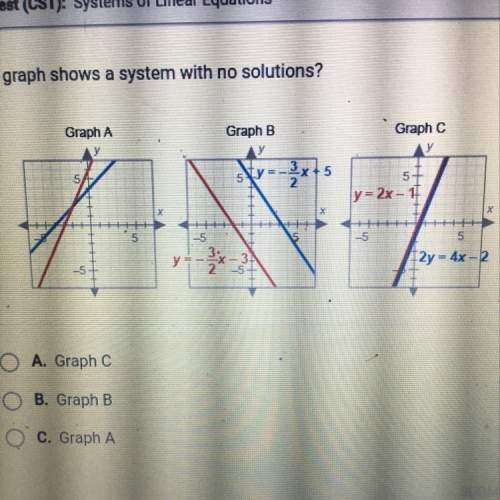
Mathematics, 26.09.2021 09:50 LadyHolmes67
What is the expected value of the distribution? O 2 The owner of a local movie theater keeps track of the number of tickets sold in each purchase and makes a probability distribution based on these records. Let X represent the number of tickets bought in one purchase. The distribution for X is given in the table. O 2.1 2.5 O 3 1 2. 3 4 5 Number of Tickets Probability 0.29 0.44 0.19 0.06 0.02

Answers: 1


Other questions on the subject: Mathematics

Mathematics, 21.06.2019 17:30, ricardodeleon152
As part of an annual fundraiser to raise money for diabetes research, diane joined a bikeathon. the track she biked on was 1,920 yards long. diane biked 38.5 laps. her sponsors agreed to donate an amount of money for each mile she biked. how many miles did she bike? first fill in the blanks on the left side using the ratios shown. then write your answer. given ratios: 5280ft / 1 mi , 1 mi /5280 ft , 1,920 yards / 1 lap , 1 lap / 1,920 yards , 3 ft / 1 yard , 1 yard / 3 ft. blanks: 38.5 laps / 1 yard x (blank) x (blank) x (blank) = (blank) miles i'm really confused on how to do this, and the explanations aren't exactly . if you could walk me through how to do this, it would be greatly appreciated.
Answers: 1

Mathematics, 21.06.2019 21:00, nell1234565
A25- foot ladder leans against a building and reaches a point of 23.5 feet above the ground .find the angle that the ladder makes with the building
Answers: 2

Mathematics, 21.06.2019 21:30, gonzalezashley152
In a test for esp (extrasensory perception), the experimenter looks at cards that are hidden from the subject. each card contains either a star, a circle, a wave, a cross or a square.(five shapes) as the experimenter looks at each of 20 cards in turn, the subject names the shape on the card. when the esp study described above discovers a subject whose performance appears to be better than guessing, the study continues at greater length. the experimenter looks at many cards bearing one of five shapes (star, square, circle, wave, and cross) in an order determined by random numbers. the subject cannot see the experimenter as he looks at each card in turn, in order to avoid any possible nonverbal clues. the answers of a subject who does not have esp should be independent observations, each with probability 1/5 of success. we record 1000 attempts. which of the following assumptions must be met in order to solve this problem? it's reasonable to assume normality 0.8(1000), 0.2(1000)%30 approximately normal 0.8(1000), 0.2(1000)% 10 approximately normal srs it is reasonable to assume the total number of cards is over 10,000 it is reasonable to assume the total number of cards is over 1000
Answers: 1

Mathematics, 21.06.2019 23:00, wiredq2049
Spencer has 1/3 pound of nuts he divides them equally into 4 bags what fraction of a pound of nuts is in each bag
Answers: 1
You know the right answer?
What is the expected value of the distribution? O 2 The owner of a local movie theater keeps track o...
Questions in other subjects:


English, 22.12.2020 23:10

Mathematics, 22.12.2020 23:10



History, 22.12.2020 23:10


Physics, 22.12.2020 23:10





